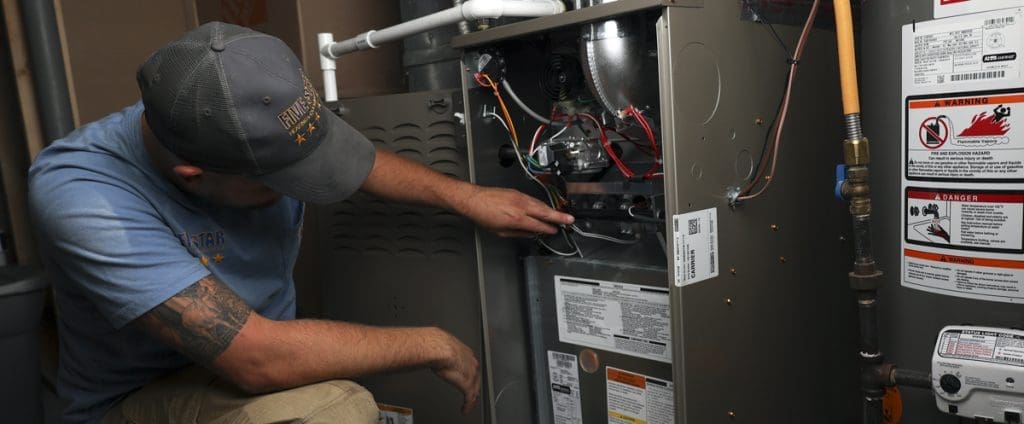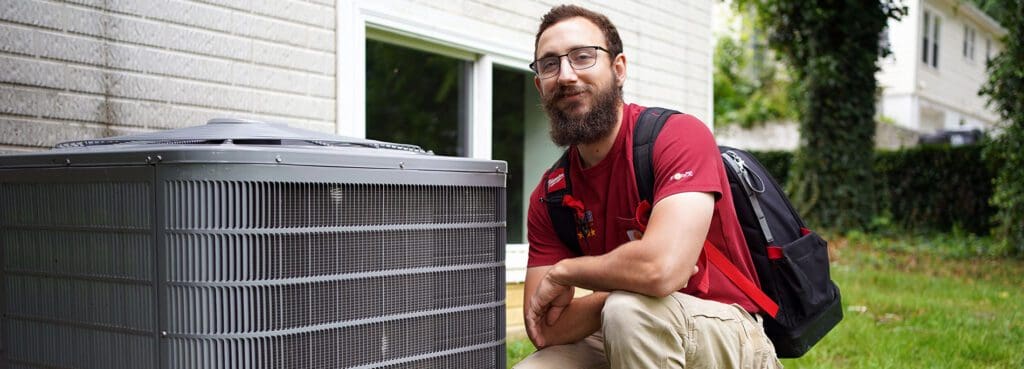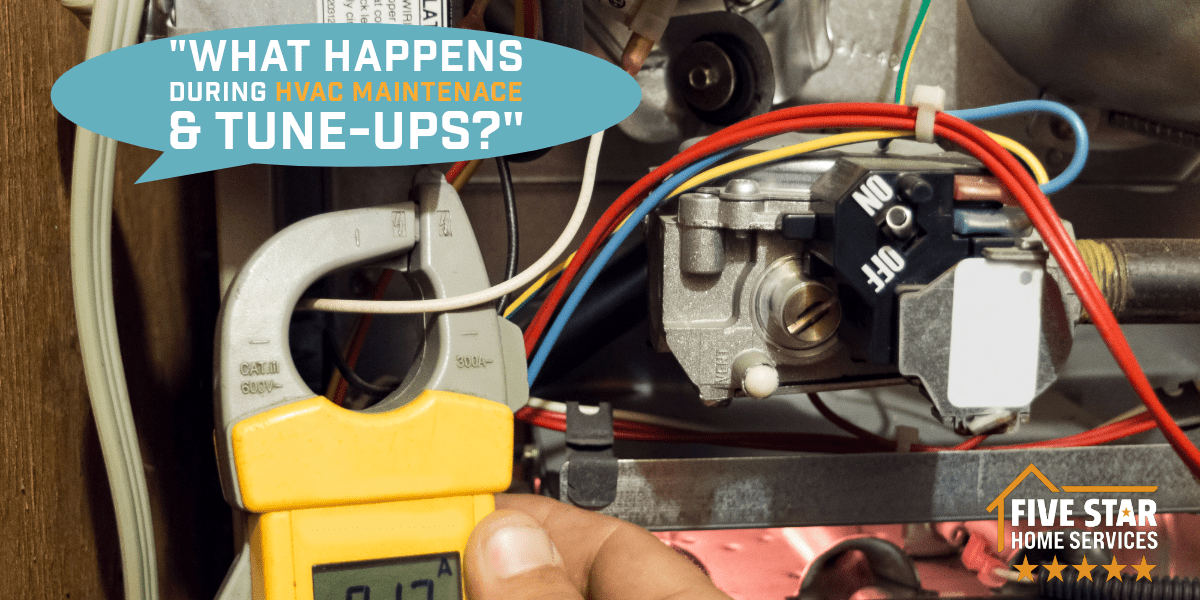Having regular preventative maintenance performed helps an HVAC system generate and distribute warm or cool air more evenly and steadily throughout the home. In the following, your friends here at Five Star Home Services will discuss some of the steps an HVAC technician should be taking. Because the average homeowner purchases only one or two HVAC systems in their lifetime, it is important to protect this investment. To get the most out of your heating and cooling system, you start by understanding that your investment needs care.
Your furnace, heat pump, and/or air conditioner should run smoothly and efficiently throughout all types of weather. Not only should your comfort equipment run well, but it should also do so without you having to worry about how well of a job its doing. The worst-case scenario would be if you skipped out on recommended maintenance and your HVAC gave out completely when the weather is at its worst.

Nevertheless, it doesn’t have to be that way. At Five Star Home Services, we offer various tiers of maintenance plans designed to keep your HVAC running optimally all year and always humming along. We’ve performed countless service calls over the years and want to educate you about what we do during these calls.
In any case, by the end of this article, we hope you’ll understand each step of a tune-up can protect your system. It can also give you added peace of mind. You’ll also see some of the worst practices in the HVAC profession, each of which could mean the premature demise of an expensive piece of equipment.
Air Conditioner Tune-Up Checklist:
- Check air filter, replace if necessary.
- Clean the outdoor condenser coil.
- Check outdoor disconnect (if applicable).
- Lubricate all the various moving parts.
- Install gauges, record pressures/temp.
- Measure superheat to fine-tune refrigerant level.
- Flush condensate drain to protect from overflow.
- Check blower motor (and belt if applicable).
- Test temperature drop at return and supply air.
- Safety test all controls for proper operation.
- Amperage readings on all motors, test bearings.
- Test operation and condition of compressor contacts.
- Inspect capacitors and relays for rust and leaks.
- Tighten and test all wires and connections.
- Clean thermostat and confirm proper operation.
- Turn humidifier off for summer non-operation.
- Inform customer of equipment conditions.
The first thing we determine is whether the HVAC system is operational. We give it a once-over. Is the filter clean? Is the furnace working and functional with the air conditioning unit and the entire system?
When our technicians perform maintenance, the first thing we do is turn everything on. We make sure everything running. Then, when we go outside and check the evaporator coil, whether it’s Trane’s Spine Fin or the conventional sheet tube, or “plate-fin.”
If the line is so hot we can barely hold our hand on it, there’s a good chance that the condenser coil is dirty. If you’re going to have proper maintenance performed — that coil will need to be cleaned.
After that, you are going to need to check things like the amp draw on the indoor motor, the amp draw on the outdoor motor, and the bearings in the blower motor in the furnace. Also check the contactor to see that it’s not pitted and it’s properly functioning.
Additionally, we also check the outdoor fan motor amp draw, the compressor amp draw and the outdoor condenser motor. We ensure the capacitor is within value, and check all the electrical connections to ensure they don’t have any bad connections.

After we’ve done all this, we put the refrigerator manifold on, turn the unit on, and give it 5 to 10 minutes before checking the AC refrigerant charge. We then check the return and supply temperatures inside and outside to make sure that everything is within specs. Most central air conditioning systems don’t have a Weatherguard Top. Because of this, their base pan will get full of leaves and other debris. We open them up and clean them out. Once you clean the condenser coil, you are likely to be amazed at how much junk you can flush out.
Heat Pump Maintenance Steps
We check everything that we normally do for an air conditioner as part of heat pump maintenance. However, we also check the operation of the machine in heating mode (and air conditioning mode during the winter). We also check the function of the reversing valve and make sure the defrost cycle is working properly.
Furnace Tune-Up Checklist:
- Clean flame sensor.
- Clean and adjust the thermostat.
- Test gas valve operation.
- Test for carbon monoxide.
- Test for gas leaks up to furnace shut-off valve.
- Check air filter, replace if necessary.
- Check humidifier operation, change for winter operation.
- Test and adjust the operation of safety and operating controls.
- Inspect flue pipe and draft diverter.
- Monitor for combustion leaks.
- Check blower motor (and belt if applicable)
- Test and tighten all wiring and connections.
- Adjust burner for maximum efficiency.
- Clean burners and inspect heat exchanger.
- Lubricate all motors, bearings, fans, and circulators.
- Clean and adjust pilot assembly.
- Inform customer of equipment conditions.
During furnace maintenance, the first thing we do is see if the homeowners have all the registers open. As part of the query, we want to get an overview of the air distribution system and see if registers are closed. We also make sure there isn’t anything blocking them, such as a sofa or something against the wall covering the return air.
With the residential furnace, we do a once-over in terms of cleanliness. If you have a gas furnace, the inshot burners might need to be cleaned. We check the amp draw on the blower motor, check the blower bearings, and the amp draw of the little inducer or draft motor to make sure that’s running properly. Then, we bring the furnace up to the proper temperature. We perform a combustion analysis, and check a sample of the flue gas. We also check for any sort of problems with the heat exchanger and the mixture of gases in there. Finally, we perform a visual check of the heat exchanger and check the gas pressure.
You measure the temperature rise of the machine, which is the temperature of the return air coming to it versus the supply air leaving it. It’s supposed to be at a certain range. If it’s too hot, it’s running too high and you’re losing efficiency that could damage the heat exchanger. If it’s too low, you risk condensing in the heat exchanger, because you don’t have enough heat to get the flue products through without condensing.
Because safety always comes first, we also check all the safety devices. We pull the hoses off the pressure switches, ensuring the port is clean where it goes into the heat exchanger. Once this hose is off the pressure switch, the equipment should shut down as part of the safety feature. You also might want to disable the motor to see if the safety trips. On a condensing furnace, you’re going to flush the condensate system to make sure it’s properly draining.
What is the Difference Between Maintenance and an Inspection?
Now we explore the differences between maintenance and inspections. Maintenance is the process of taking steps to maintain the equipment. Inspection is just checking everything over.
We’re using a flashlight and running some diagnostic tools. With an inspection, we aren’t doing things like cleaning the burners or adjusting the gas pressure, or adjusting the blower speed for the heat rise.
Common Steps Skipped by HVAC Technicians
While many HVAC technicians perform their tasks diligently, there are some common maintenance steps that are often overlooked. These include checking the refrigerant levels, cleaning the evaporator and condenser coils, inspecting the heat exchanger for any signs of damage or corrosion, and verifying the proper function of the thermostat. Regular cleaning of air filters is also a frequent oversight despite its importance to overall system performance and indoor air quality. These oversights may lead to reduced efficiency, higher energy costs, and a shortened lifespan of the HVAC system.
By being mindful of these often-neglected tasks, HVAC technicians can dramatically improve the performance and longevity of the systems they service. An HVAC unit that is regularly and thoroughly maintained will run more efficiently, consume less energy, and provide a healthier, more comfortable indoor environment. In the long run, this preventive approach can result in significant savings for homeowners and business owners alike. It underscores the fact that in the realm of HVAC maintenance, attention to detail can yield substantial benefits.
Moreover, regular maintenance can also prevent potential safety hazards. For example, a dirty and clogged evaporator coil can lead to insufficient cooling, causing the system to work harder and potentially overheat. This not only puts strain on the HVAC unit but also poses a fire risk. Similarly, a malfunctioning thermostat could result in temperature fluctuations, which may disrupt the functioning of other components and lead to higher energy consumption. Regular maintenance can catch these issues early on and prevent them from escalating into serious safety concerns.
Additionally, proper maintenance can help detect any underlying problems before they worsen and require expensive repairs or replacements. HVAC technicians should also keep in mind that neglecting routine maintenance may void the manufacturer’s warranty, leaving customers with no coverage for potential damages.
Choosing the Right HVAC Contractor in Ohio
When choosing the right HVAC contractor in Ohio, various factors need to be taken into consideration. Firstly, ensure the contractor is licensed and insured, demonstrating a level of professionalism and compliance with necessary regulations. Secondly, look for contractors with a substantial amount of experience, as this suggests a proven track record and a high level of expertise. Thirdly, examine their customer reviews and ratings to gain insights into their quality of service and customer satisfaction. Lastly, seek out contractors who provide ongoing support and maintenance after installation, ensuring your HVAC system remains in optimal condition for years to come.
When it comes to HVAC systems, regular maintenance is key in ensuring their longevity and efficient functioning. A reliable contractor will offer routine maintenance services to prevent any major issues from arising. This includes cleaning and replacing filters, checking for leaks and malfunctions, as well as conducting regular tune-ups to keep your system running smoothly.
Another important factor to consider when choosing an HVAC contractor is their availability and response time in case of emergencies. A trustworthy contractor should offer 24/7 emergency services, as HVAC issues can arise at any time and require immediate attention to avoid further damage. In addition to regular maintenance and emergency services, it is also important to inquire about the warranties and guarantees offered by the contractor. A reputable contractor will provide warranties for both parts and labor, giving you peace of mind and assurance that any potential issues will be taken care of.
Furthermore, consider the energy-efficient options offered by the HVAC contractor. With rising energy costs, it is important to choose a system that will not only provide optimal comfort but also save you money in the long run. A reputable contractor should offer a variety of energy-efficient options and be able to provide expert advice on which system is best suited for your specific needs and budget.
In conclusion, choosing the right HVAC contractor involves thorough research and consideration of various factors such as licensing, experience, customer reviews, ongoing support and maintenance protection plans, availability for emergencies, warranties and guarantees, and energy-efficient options. By taking the time to carefully select a reputable contractor, you can ensure the longevity of your equipment and get the most out of it.


